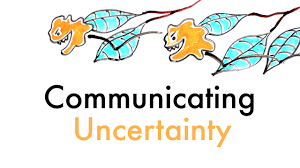For those who care about how risk information is provided – I despise the words educate and communicate – welcome to the world of the European Food Safety Authority.
 How hard is it to tell a story, one that is backed with credible information?
How hard is it to tell a story, one that is backed with credible information?
That’s how people learn.
A key feature of risk analysis is that risk assessment and risk management should be functionally separated (bullshit). However, the usefulness of a risk assessment may be limited if the output is not designed to help with risk management decisions. The COMRISK project investigated the communication between risk assessors and risk managers. The overall goal of the project was to identify current practices and challenges in communication between risk assessors and risk managers during the risk analysis process, and thus increase and improve the understanding and the quality of the communication between them.
Specific actions to achieve this aim included reviewing of historical food safety cases, analysing risk assessment requests, identifying communication guiding documents, including legislation and agreements, conducting semi‐structured interviews with risk assessors and risk managers, and identifying tools for facilitating the communication between risk assessors and risk managers.
It was concluded that the usefulness of a risk assessment is strongly dependent on well‐defined and mutually recognised risk questions and that scarce or poor communication between risk assessors and risk managers is one of the major reasons when an output from risk assessment fails to support risk management. The communication between risk assessors and risk managers preceding the onset of the risk assessment, when the risk assessment requests with its risk questions are defined, is especially identified as one of the critical points to ensure a risk assessment that is fit for purpose. However, difficulties in understanding were also reported for the communication between risk assessors and risk managers during and after the risk assessment. Lack of communication is seldom a result of formal constraints or agreements nor can it be explained by a wish of the risk assessors or risk managers. Instead, perceived constraints or traditions appear to be possible underlying factors leading to scarce or poor communication between risk assessors and risk managers. It is essential that both risk assessors and risk managers acknowledge the crucial importance of communication between them while at the same time respect their different roles in a risk analysis.
According to respondents, the best solution to facilitate the framing of the risk assessment questions is an open dialogue between risk assessors and risk managers to agree on the goal of the assessment and to build trust. Further, the interview results indicate that a formal systematic process may facilitate communication during the risk analysis. Where there is uncertainty, e.g due to data gaps or issues related to the methodology and models, it should be acknowledged and described properly by risk assessors to risk managers. Training of risk assessors and risk managers may improve the possibility of a timely and fit‐for‐purpose output. Such a training should give a deeper insight in the risk management process, give a better understanding of the risk managers role, and especially raise the awareness of the importance of the communication between risk assessors and risk managers.
To improve the risk analysis process, it is also important that the risk assessor gets feedback regarding how risk assessments have met the needs of the risk managers. The present study also found that aspects of risk communication studied in this project are not extensively discussed in the guidance documents for risk analysis. More research is needed to identify the barriers for a fit for purpose communication.












